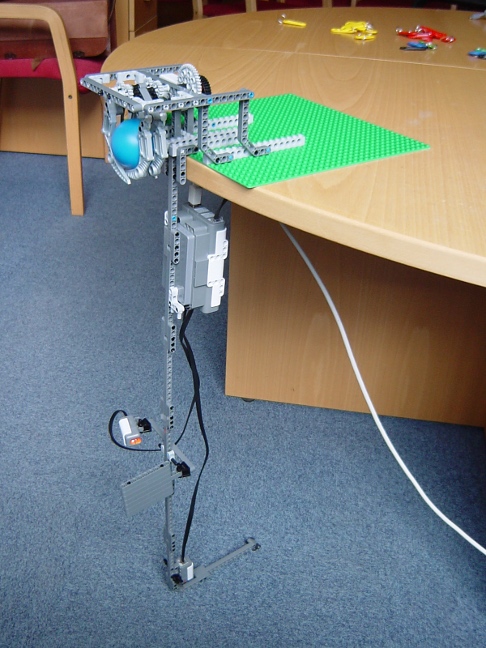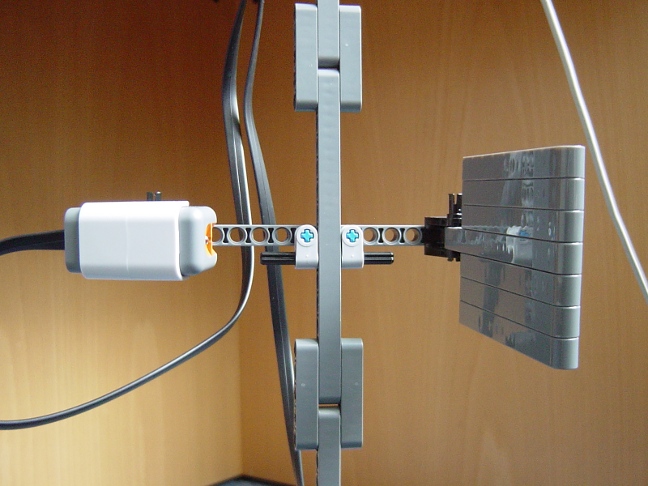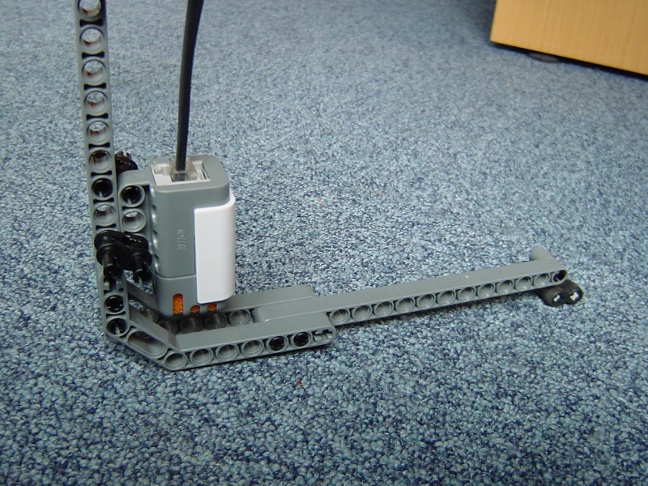The decidedly decent dropper
This is a major simplification of the dazzlingly didactic dropper,
which you should read about first if you have not already done so. The
two dropper variants illustrate the extremes of mechanical
complexity that we expect to see in this exercise. As  this
movie shows,
there is no mechanism to return the ball between runs and the light
sensor has to be repositioned manually. The decidedly decent dropper
took us around one hour to build and another 30 minutes to write the
software. While we do admittedly have a lot of Lego and Python
experience, a model of this complexity should be perfectly achievable
by a team of three novices in a few hours, leaving plenty of time to do
some science with the completed apparatus (i.e. measure gravitational
acceleration and observe drag effects). In fact, since the fall is over
a greater distance, and the light sensor positioning more repeatable,
you should be able to do better science with this than with the dazzlingly didactic dropper.
The downside is that you will learn very little about structures and
mechanisms, and you certainly won't win any prizes for an outstanding
Lego system!
this
movie shows,
there is no mechanism to return the ball between runs and the light
sensor has to be repositioned manually. The decidedly decent dropper
took us around one hour to build and another 30 minutes to write the
software. While we do admittedly have a lot of Lego and Python
experience, a model of this complexity should be perfectly achievable
by a team of three novices in a few hours, leaving plenty of time to do
some science with the completed apparatus (i.e. measure gravitational
acceleration and observe drag effects). In fact, since the fall is over
a greater distance, and the light sensor positioning more repeatable,
you should be able to do better science with this than with the dazzlingly didactic dropper.
The downside is that you will learn very little about structures and
mechanisms, and you certainly won't win any prizes for an outstanding
Lego system!
| Some annotated photographs | |
|---|---|
 | The dropper comprises a release mechanism (top), light sensor (lower) and microphone (bottom). The light sensor spots the ball passing by and the microphone detects the moment of impact. |
 | A Lego NXT cable will not reach from the tabletop to the floor, so the NXT brick needs to be positioned part way down the column. |
 | A close-up photograph of the release mechanism. |
 | The light sensor (left) can be mounted at any height by moving the black axle to another hole. The shade (right) makes the system less sensitive to ambient light variations. |
 | Beneath the microphone is a friction foot to anchor the column firmly on the floor. |
The decidedly decent dropper was designed and built by Graham Treece in May 2010.